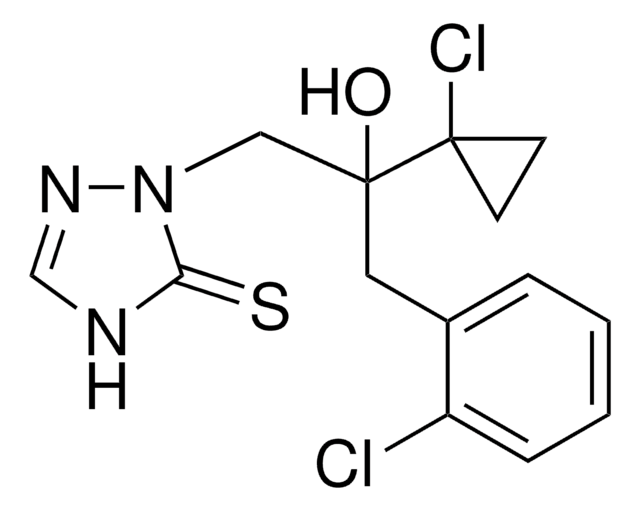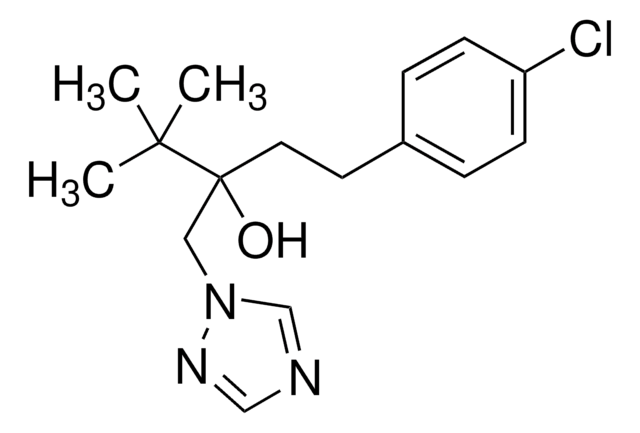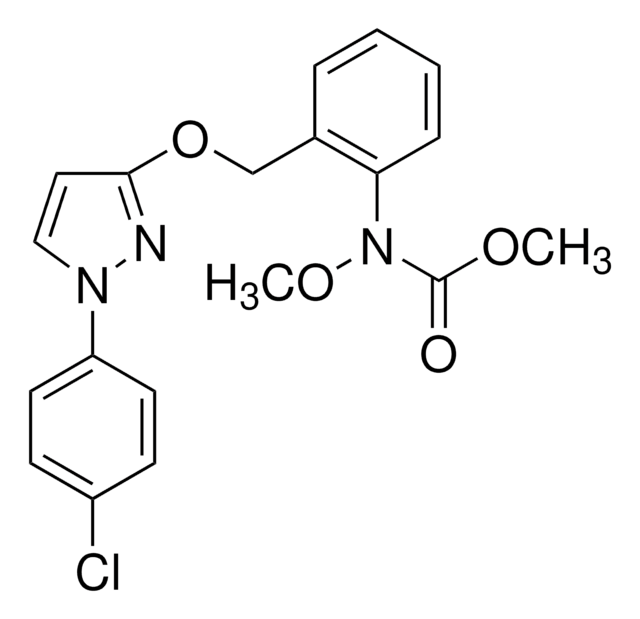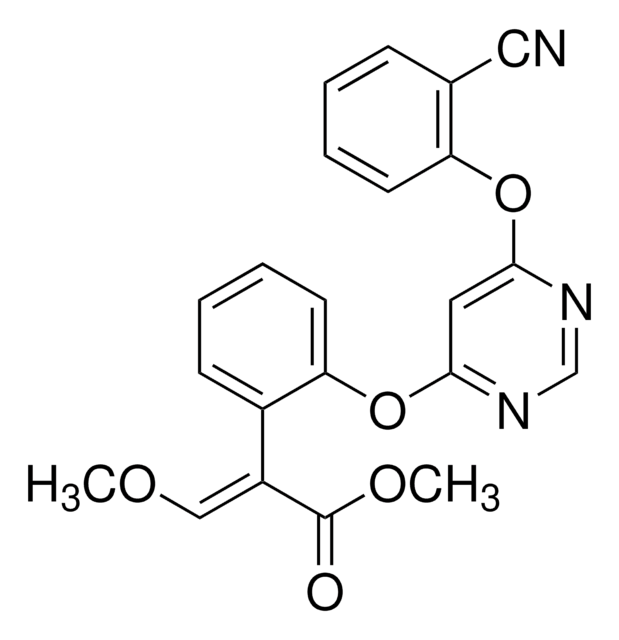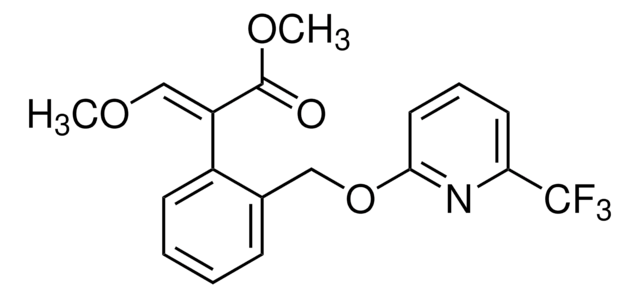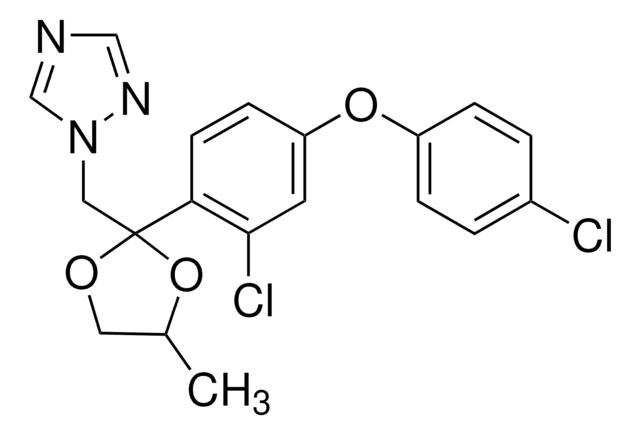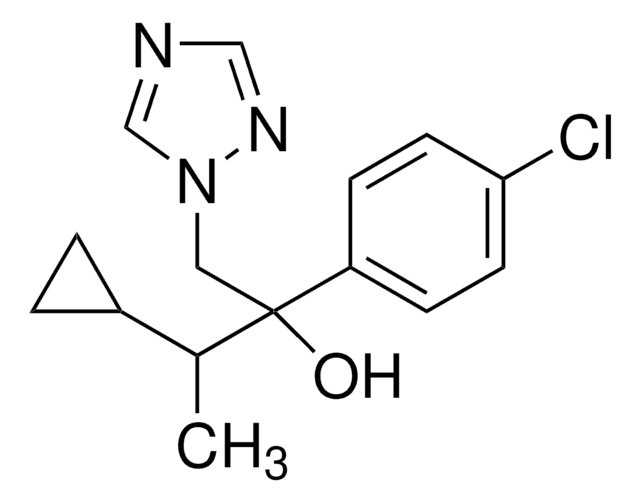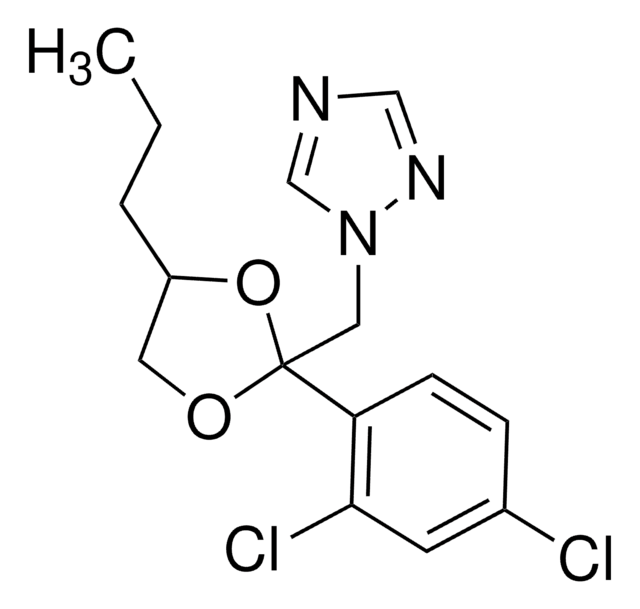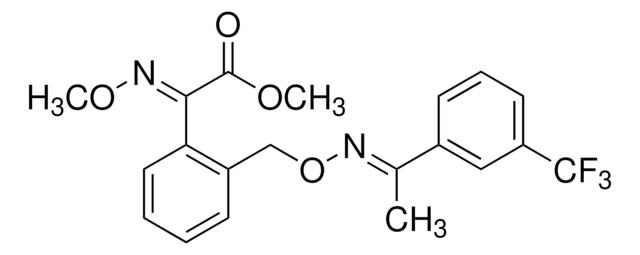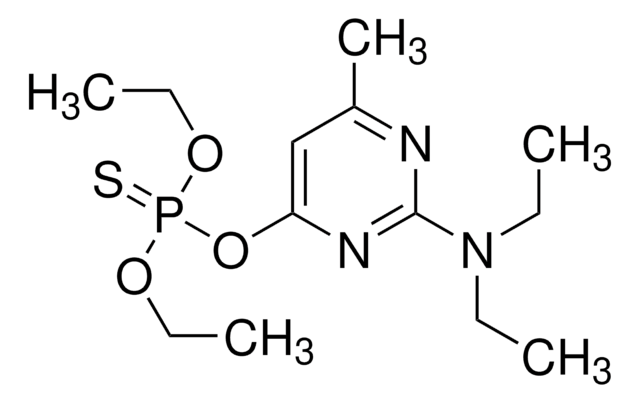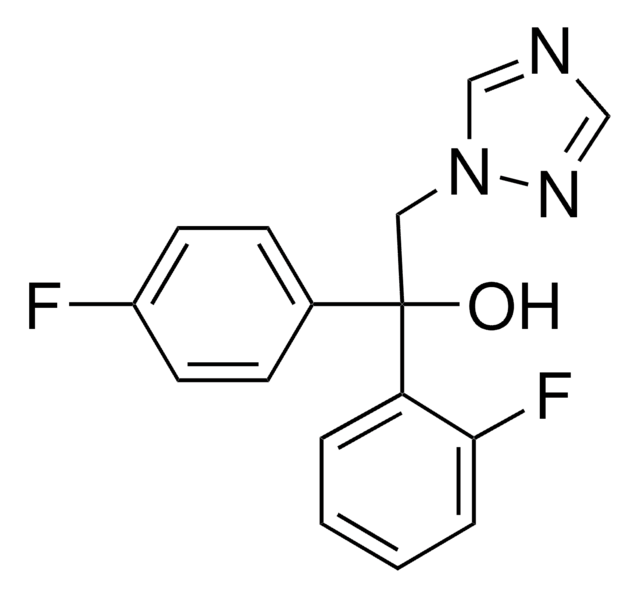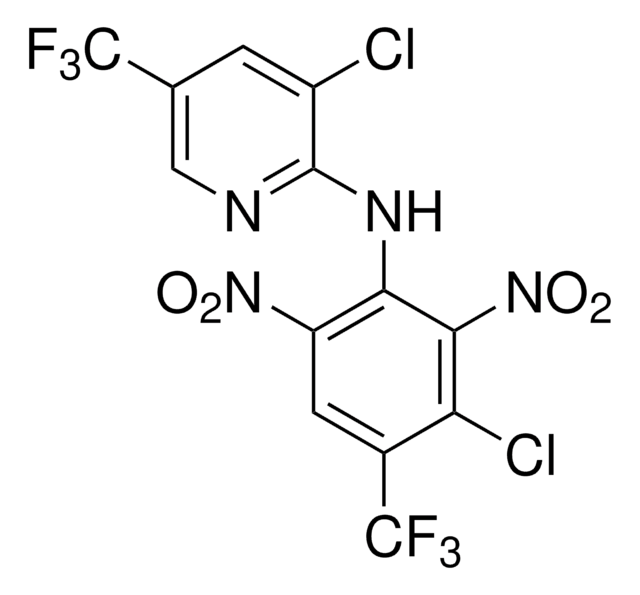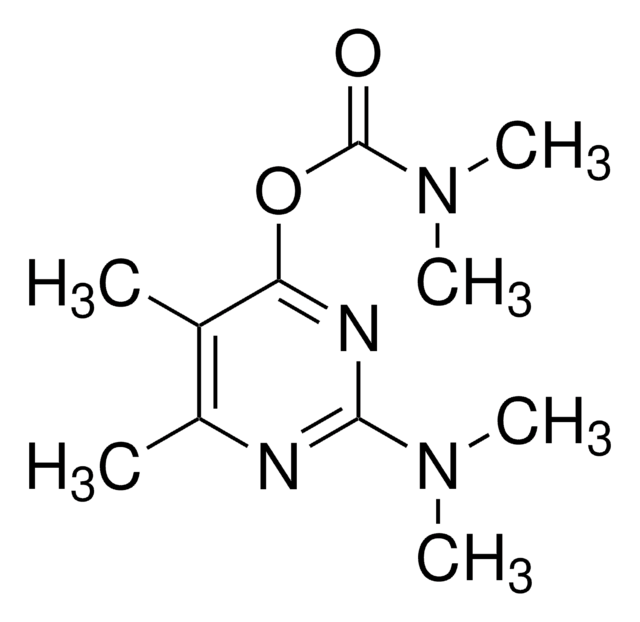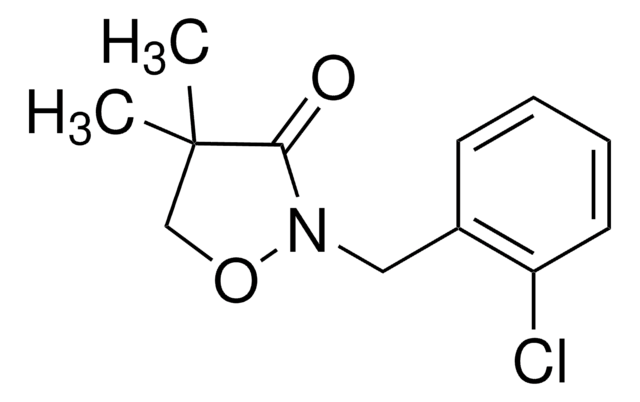33658
Picoxystrobin
PESTANAL®, analytical standard
Synonym(e):
(E)-α-Methoxymethylen-2-(-6-trifluormethyl-2-pyridyloxymethyl)-phenylessigsäure-methylester
About This Item
Empfohlene Produkte
Qualität
analytical standard
Qualitätsniveau
Produktlinie
PESTANAL®
Haltbarkeit
limited shelf life, expiry date on the label
Methode(n)
HPLC: suitable
gas chromatography (GC): suitable
Anwendung(en)
agriculture
environmental
Format
neat
SMILES String
CO\C=C(/C(=O)OC)c1ccccc1COc2cccc(n2)C(F)(F)F
InChI
1S/C18H16F3NO4/c1-24-11-14(17(23)25-2)13-7-4-3-6-12(13)10-26-16-9-5-8-15(22-16)18(19,20)21/h3-9,11H,10H2,1-2H3/b14-11-
InChIKey
IBSNKSODLGJUMQ-KAMYIIQDSA-N
Suchen Sie nach ähnlichen Produkten? Aufrufen Leitfaden zum Produktvergleich
Verwandte Kategorien
Allgemeine Beschreibung
Anwendung
- Honeybees using acetonitrile-based extraction followed by dispersive solid-phase extraction (d-SPE) cleanup and gas chromatography−tandem quadrupole mass spectrometry (GC−MS/MS).
- Foodstuffs by liquid chromatography (LC) combined with MS/MS, atmospheric pressure chemical ionization (APCI) and electrospray ionization (ESI).
- Paddy field water by direct injection using LC coupled with quadrupole-linear ion trap (QqLIT)-MS.
- Maize by acetonitrile-based extraction with dispersive liquid−liquid microextraction (DLLME) followed by GC-MS.
Rechtliche Hinweise
Signalwort
Warning
H-Sätze
P-Sätze
Gefahreneinstufungen
Acute Tox. 4 Inhalation - Aquatic Acute 1 - Aquatic Chronic 1
Lagerklassenschlüssel
11 - Combustible Solids
WGK
WGK 2
Flammpunkt (°F)
Not applicable
Flammpunkt (°C)
Not applicable
Persönliche Schutzausrüstung
Eyeshields, Faceshields, Gloves
Choose from one of the most recent versions:
Besitzen Sie dieses Produkt bereits?
In der Dokumentenbibliothek finden Sie die Dokumentation zu den Produkten, die Sie kürzlich erworben haben.
Kunden haben sich ebenfalls angesehen
Unser Team von Wissenschaftlern verfügt über Erfahrung in allen Forschungsbereichen einschließlich Life Science, Materialwissenschaften, chemischer Synthese, Chromatographie, Analytik und vielen mehr..
Setzen Sie sich mit dem technischen Dienst in Verbindung.